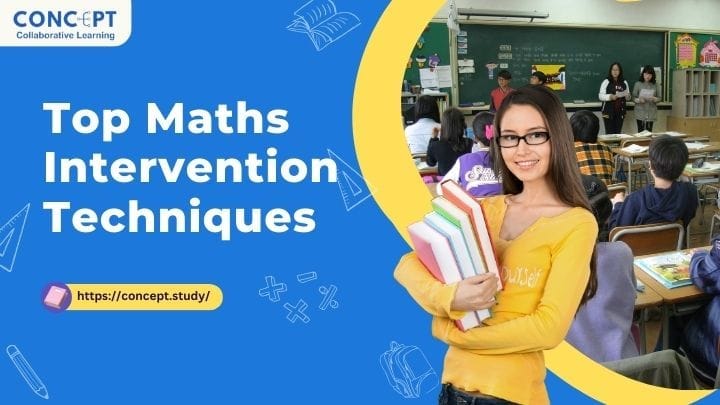
Top Maths Intervention Techniques to Close the Gap and Boost Student Confidence
Understanding the Maths Attainment Gap
The Maths attainment gap is a persistent challenge in education systems worldwide. This gap reflects the disparity in mathematical achievement between different groups of students, often influenced by socioeconomic factors, access to quality resources, and individual learning needs. Addressing this gap is crucial for ensuring that all students have the opportunity to excel in maths, which is foundational for many aspects of future academic and career success.
The Importance of Targeted Maths Interventions
Effective maths intervention strategies are essential for closing this gap. These interventions are tailored approaches designed to meet the specific needs of students who are struggling with mathematical concepts. By implementing targeted interventions, educators can provide students with the support they need to build their mathematical understanding, boost their confidence, and improve their overall performance. Tips for Excelling in GCSE Maths
Key Maths Intervention Techniques
1. Diagnostic Assessment and Personalized Learning Plans
One of the most effective ways to begin addressing the maths attainment gap is through diagnostic assessments. These assessments help identify students’ specific areas of difficulty, allowing educators to develop personalized learning plans that target these weaknesses. Personalized learning plans ensure that each student receives the appropriate level of support and instruction tailored to their unique needs.
2. Small Group Instruction
Small group instruction is a powerful intervention technique that allows for more focused and individualized teaching. By working with a small group of students, educators can provide targeted support and direct feedback, making it easier to address specific misconceptions and reinforce key concepts. This approach also encourages peer collaboration, enhancing understanding and confidence in maths.
3. Use of Manipulatives and Visual Aids
For many students, abstract mathematical concepts can be difficult to grasp. Manipulatives and visual aids are essential tools that can help bridge this gap. By providing concrete representations of mathematical ideas, such as counters, number lines, and geometric shapes, students can better visualize and understand the concepts being taught. This hands-on approach can significantly improve students’ comprehension and retention of mathematical principles.
4. Regular Progress Monitoring
To ensure the effectiveness of intervention strategies, it is important to implement regular progress monitoring. This involves tracking students’ performance over time to assess their progress and adjust their learning plans as needed. Revision for a level maths
Regular monitoring allows educators to identify areas where students may need additional support or where interventions may need to be modified to better meet their needs.
5. Peer Tutoring and Collaborative Learning
Peer tutoring is another effective intervention technique that can help close the maths attainment gap. In this approach, higher-achieving students are paired with their peers who may be struggling.
This not only provides additional support for the students in need but also reinforces the tutor’s own understanding of the material. Collaborative learning environments encourage students to work together to solve problems, promoting a deeper understanding of mathematical concepts through discussion and teamwork.
6. Technology-Enhanced Learning
The integration of technology in maths instruction has revolutionized the way interventions are delivered. Educational software and online platforms offer personalized learning experiences that can adapt to each student’s pace and level of understanding.
These tools often include interactive elements, such as games and quizzes, that make learning maths more engaging and accessible. Technology-enhanced learning also allows for immediate feedback, helping students correct mistakes and learn from them in real time.
7. Intensive One-on-One Tutoring
For students who require more individualized support, intensive one-on-one tutoring can be highly effective. This approach allows for direct, personalized instruction that targets the student’s specific needs.
Tutors can focus on particular areas of difficulty, provide immediate feedback, and adjust teaching strategies to suit the student’s learning style. One-on-one tutoring is especially beneficial for students who have significant gaps in their mathematical knowledge and need targeted intervention to catch up.
8. Incorporating Real-World Applications
Connecting maths to real-world scenarios can make the subject more relevant and engaging for students. Incorporating real-world applications into maths instruction helps students see the practical value of what they are learning. This approach not only enhances understanding but also increases student motivation and interest in the subject. By demonstrating how maths is used in everyday life, educators can help students develop a more positive attitude towards the subject and boost their confidence in their abilities.
9. Parental Involvement and Support
Parental involvement plays a crucial role in supporting students’ mathematical learning. When parents are engaged in their child’s education, students are more likely to succeed. Educators can encourage parental involvement by providing resources and strategies for parents to support their child’s maths learning at home. This may include tips for practicing maths skills, helping with homework, or using everyday activities to reinforce mathematical concepts.
10. Professional Development for Educators
To effectively implement these intervention strategies, educators need ongoing professional development. Training programs that focus on the latest research in maths education, effective teaching strategies, and the use of technology can equip teachers with the tools they need to support their students.
Professional development opportunities also provide a platform for educators to share best practices and collaborate on innovative approaches to closing the maths attainment gap.
The Impact of Effective Maths Interventions
When implemented effectively, these maths intervention techniques can have a profound impact on student outcomes. By providing targeted support, educators can help students overcome their challenges, close the attainment gap, and build the confidence they need to succeed in maths and beyond.
Conclusion
Closing the maths attainment gap requires a comprehensive approach that combines diagnostic assessment, personalized learning, and ongoing support. By utilizing the intervention techniques outlined in this article, educators can make a significant difference in the lives of their students, helping them achieve their full potential in mathematics. A level maths
